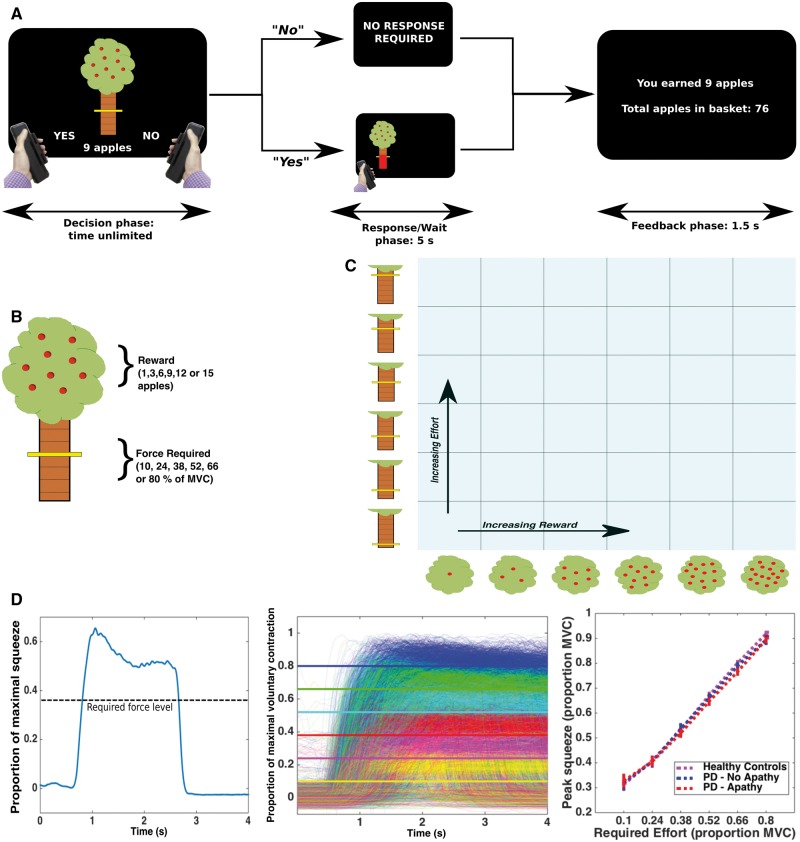Figure 1.
Effort-based decision-making task. On a trial-by-trial basis, participants were presented with offers of a certain amount of reward (apples on an apple tree, with each apple worth 1p) in return for a level of physical effort [ranging between 10% and 80% of a subjects’ previously determined maximal voluntary contraction (MVC), held for 1 s] (A and B). They were instructed to weigh up each offer, deciding ‘whether it was worth it’. If they accepted an offer (by squeezing the left-hand grip) the tree moved to the left or right of the screen, indicating which hand they had to perform the force squeeze with. They had a 5-s window within which to achieve the required force level. If they rejected the offer (by squeezing the right-hand grip) they waited the same 5-s period. After a feedback phase they then moved onto the next trial. After a practice session, participants worked through 180 trials, which evenly sampled the 6 × 6 ‘decision space’ over five blocks (C). Example force trace from a single trial (D, left). Participants parametrically modulated force output to task requirements. Superimposed force traces for all patients, ON and OFF their dopaminergic medications. Each required force level is a different colour, and the solid lines show the minimum required level (D, middle). Both patients and healthy controls modulated squeeze force appropriately (D, right). PD = Parkinson’s disease.

